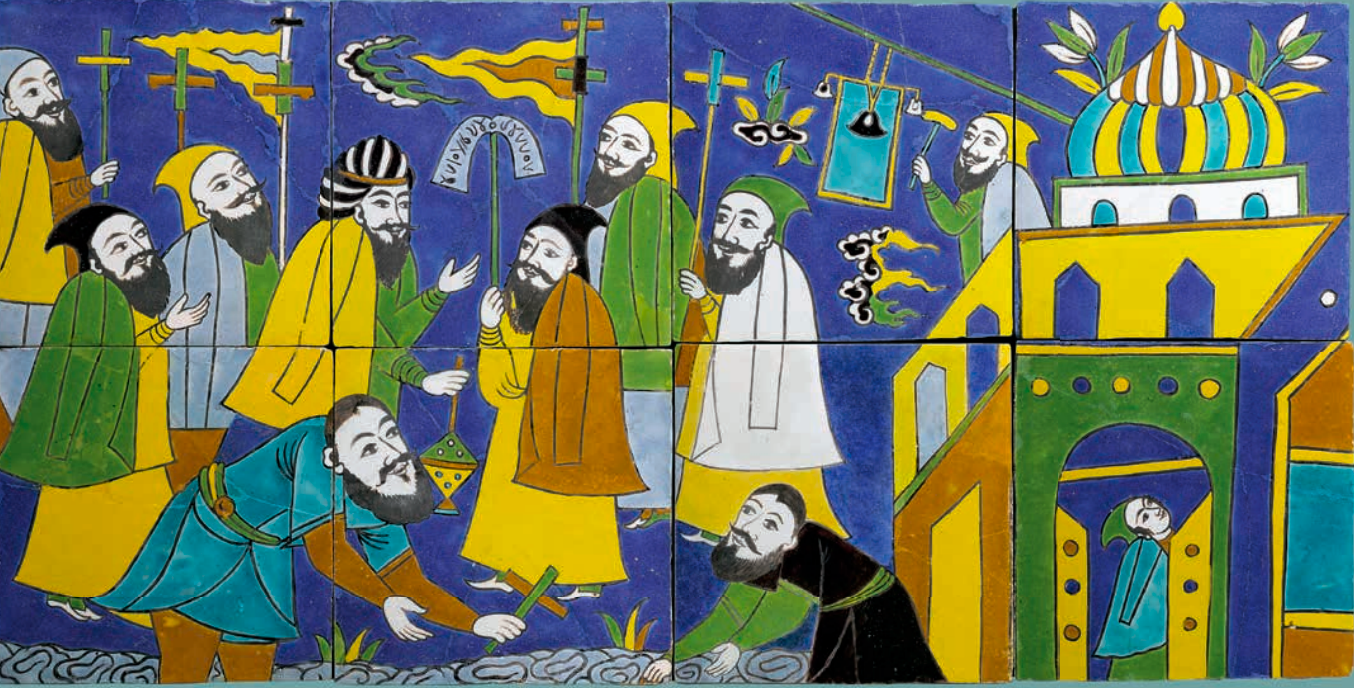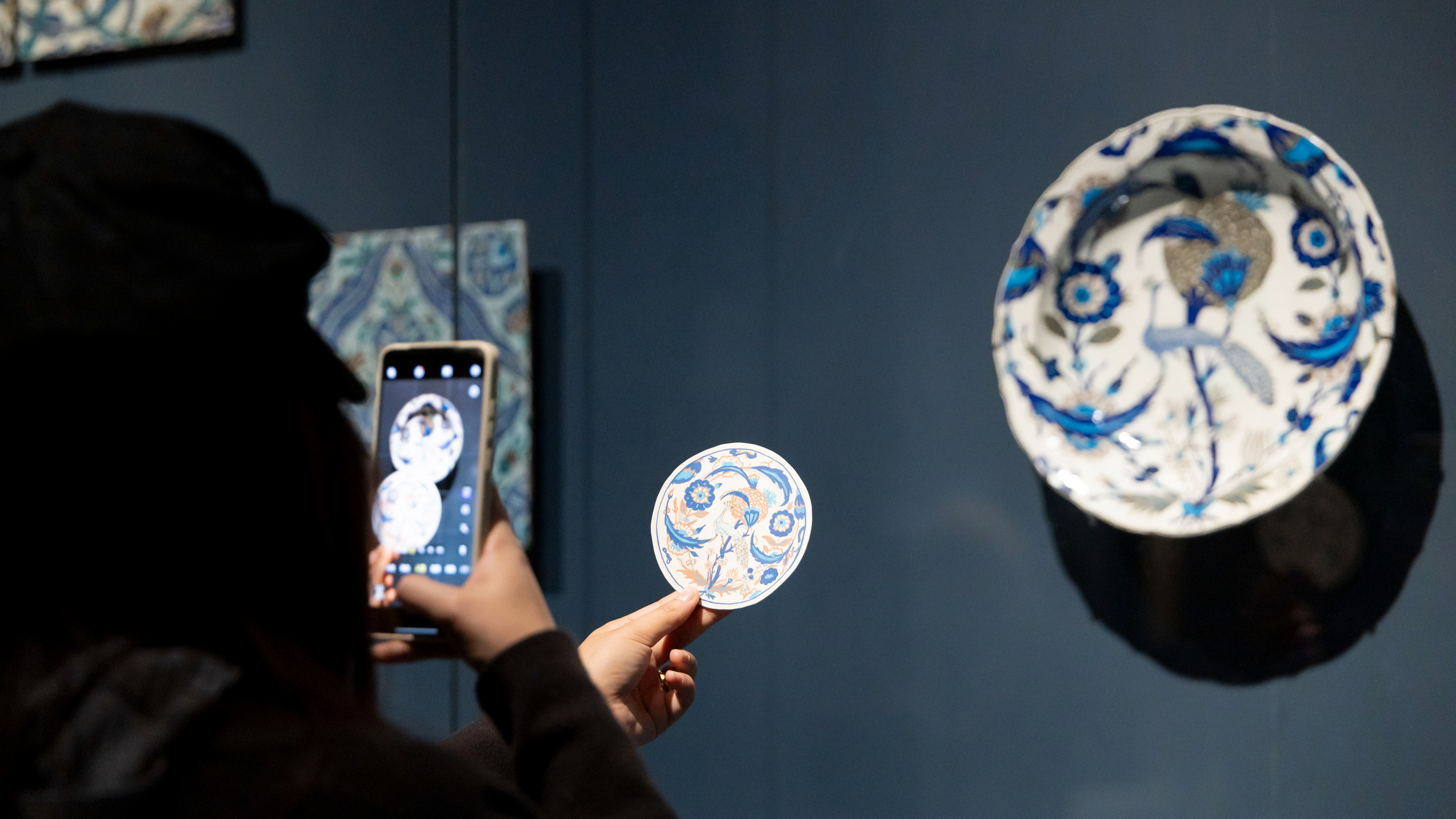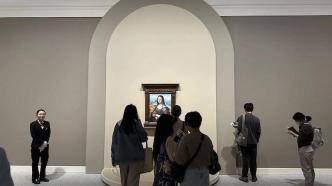
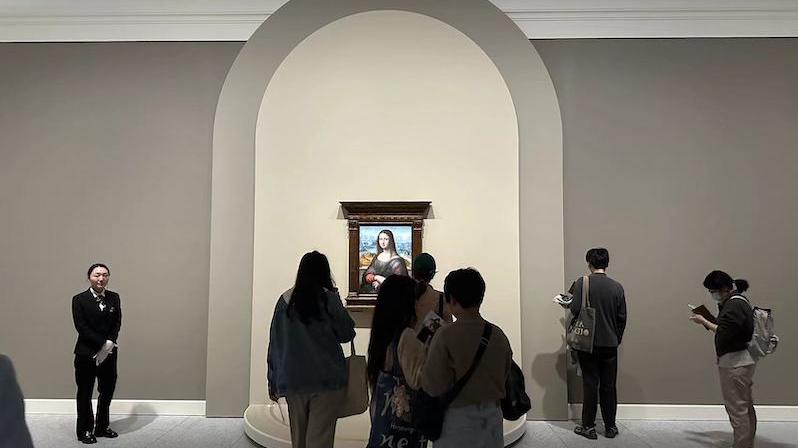
On the evening of April 22, "Glorious Times: Spanish Past in the Prado Museum" opened at the Shanghai Pudong Art Museum. The exhibition spans the 16th to 20th centuries and brings together 70 works by painters such as Titian, Veronese, El Greco, Rubens, Velázquez, Goya, Sorolla and others from the Prado Museum's collection. The works show the inheritance of Spanish painting and are also a testimony to the history of science, economy and culture in Spain.
Regarding the Prado's Mona Lisa, which is the focus of this special unit, Miguel Falomir Faus, director of the Prado Museum, said: "After research, we believe that the Prado's Mona Lisa was completed under the guidance of Leonardo da Vinci himself."
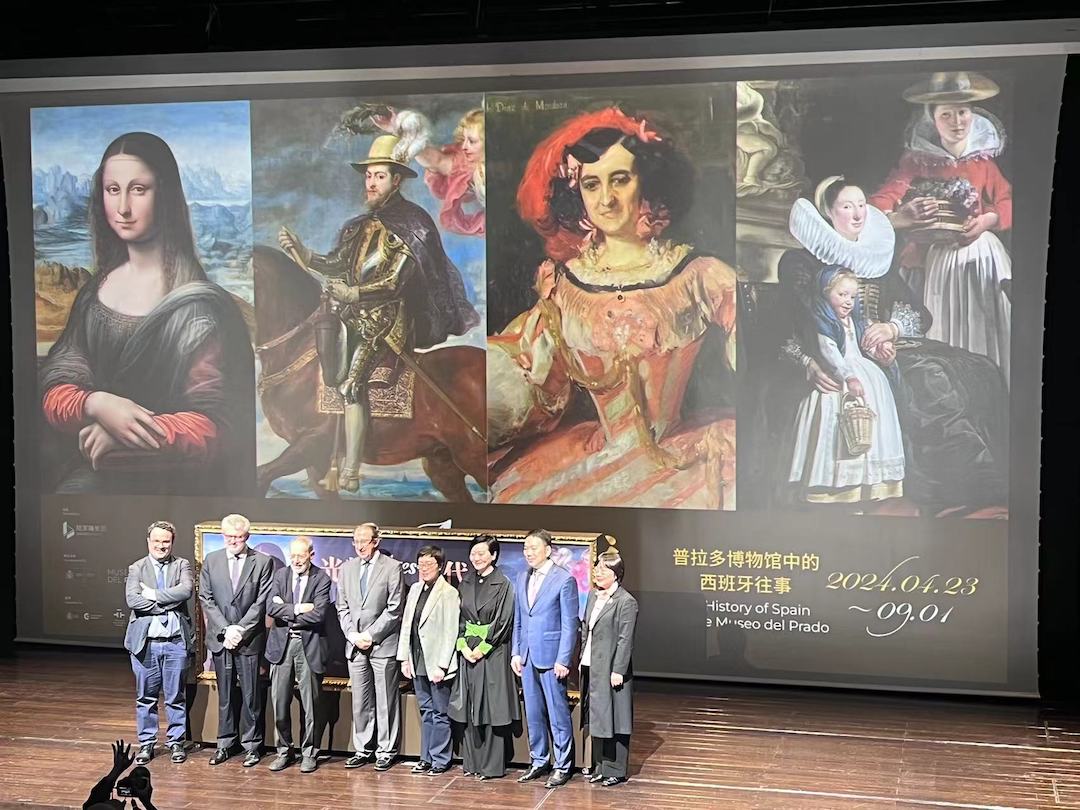
The opening ceremony of the exhibition "Glorious Times: Spanish Past in the Prado Museum" at Pudong Art Museum
The Prado National Museum is known as one of the most outstanding museums in the world, with the world's top collection of Spanish art. Miguel Falomir Faus, director of the Prado Museum, said at the opening ceremony, "Today is an important day for the Prado Museum. In the next few months, the Prado Museum will show the most outstanding paintings in its exquisite collection to the Chinese public. This is a group of exquisite Western art masterpieces, but its significance goes far beyond that. Few museums can reflect the history of their own country as clearly as the Prado Museum. The 70 works on display in this exhibition bear witness to the amazing aesthetic achievements of European painting masters, and at the same time, bear witness to the important role played by Spain in European and world history. Therefore, the title of this exhibition is very appropriate."
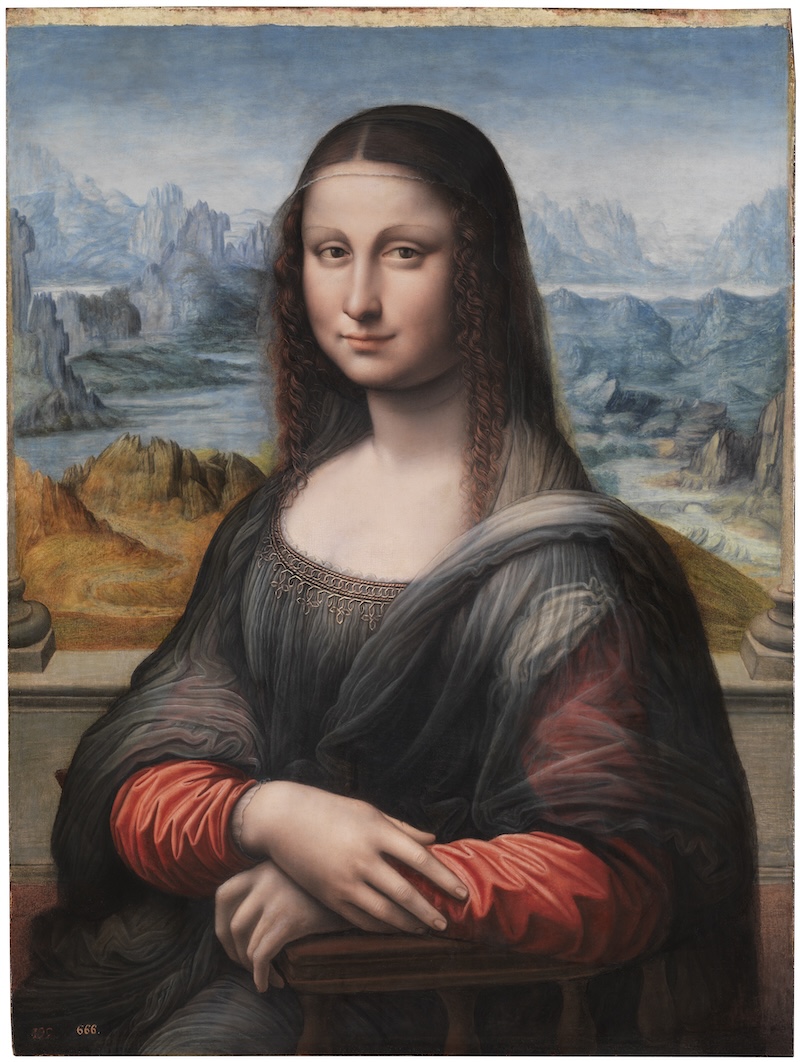
Leonardo da Vinci's Studio, "Mona Lisa", circa 1507/1508-1513/1516, oil on wood, collection of the Prado National Museum
“A few years ago, the Shanghai Metro exhibited 29 selected replicas of the Prado Museum. These works toured public spaces in cities across China, allowing millions of people to come into contact with the art of the Prado for the first time. Other events also paved the way for this day and this exhibition,” said Miguel Falomir Faus.
Special section focuses on the Prado's Mona Lisa
The Focus section presents one of the most historically valuable works in the Prado Museum's collection: the Prado's Mona Lisa. Research has shown that the painting was created in the same period as the original Mona Lisa in the Louvre and was created by members of Leonardo da Vinci's studio. It is worth emphasizing that this exhibition is the second time in the history of this work that has left the Prado Museum. It was only briefly left in 2012 when it was loaned to the Louvre for exhibition.

The work has been on display almost exclusively in the Prado Museum's Hall 52B since 2013, when it returned from an exhibition at the Louvre. The new layout, which opened in 2021, allows visitors to admire the Mona Lisa alongside other 16th-century Spanish and Italian masterpieces that were heavily influenced by Leonardo da Vinci.
"This work is so famous because it points to Leonardo da Vinci's studio and his personal experiences. Through the study of its painting materials, brushstrokes, and even the fact that it was completed under the guidance of Leonardo da Vinci himself," said Miguel Falomir Faus, director of the Prado Museum. "Leonardo da Vinci's Mona Lisa cannot leave the Louvre, so the restored Mona Lisa from the Prado was loaned to the Louvre, which established the status of the Mona Lisa in the Prado. This exhibition at the Pudong Art Museum is a good opportunity for Chinese audiences to appreciate and enjoy it."
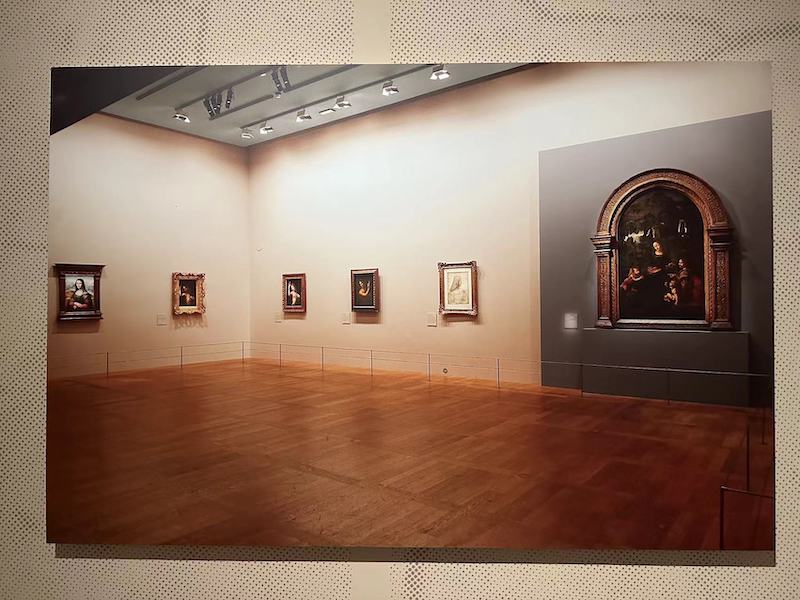
The Louvre Museum's "Leodado da Vinci's Last Masterpiece: Saint Anne" exhibition
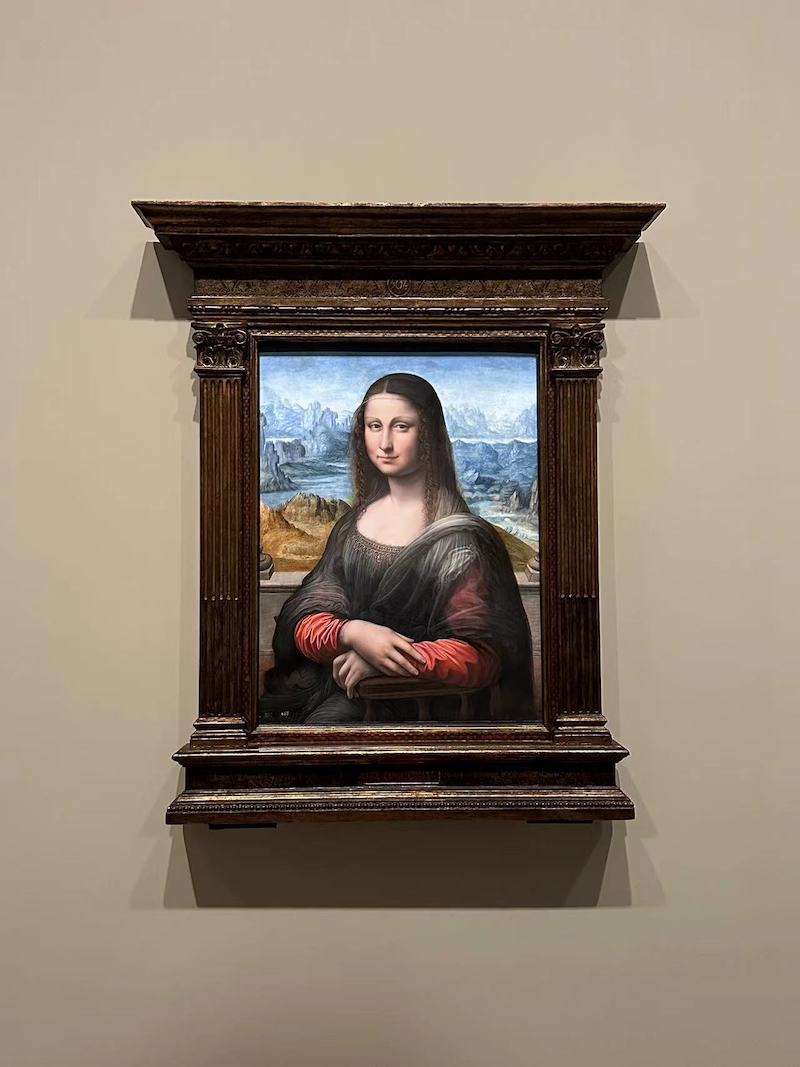
Exhibition site: Mona Lisa in the Prado Museum
It is reported that the "Mona Lisa" in the Prado Museum was included in the list of Spanish royal collections as early as the 17th century. It was later included in the collection of the Prado Museum in 1819 with the establishment of the Prado Museum and has been displayed in the exhibition hall of the Prado. In 2011, in order to loan the painting to the Louvre in France for the Leonardo da Vinci theme exhibition the following year, the Prado Museum restored and studied it. After analysis, it was found that there was a layer of landscape painting under the black pigment in the background of the picture. This restoration made the picture that had been covered for a long time visible. Through infrared reflection imaging technology, people also found that the Prado's "Mona Lisa" shared many amazing synchronizations with the original version of the Louvre during the painting process. At present, the Prado's "Mona Lisa" is regarded as one of the important clues to restore the creative process of Leonardo da Vinci's studio.
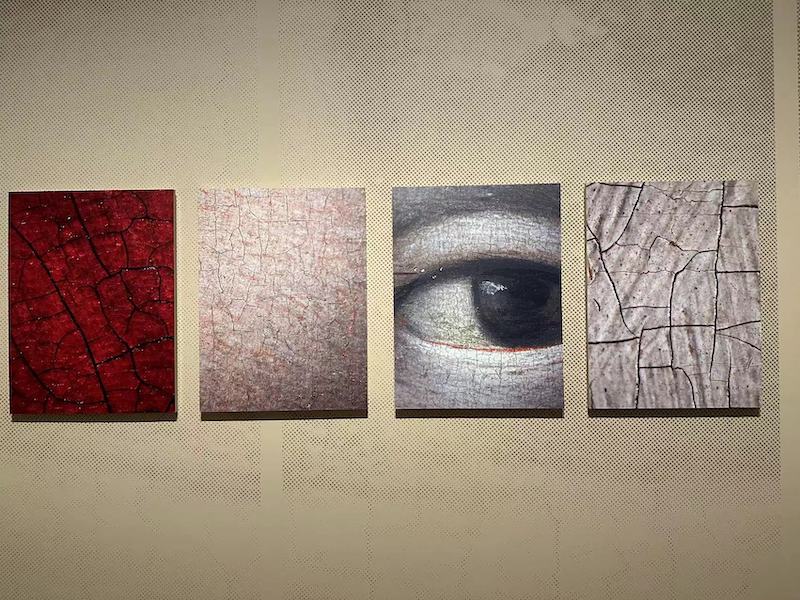
Macro photography These photos show the details of the creative process, allowing the viewer to see the painting in great detail
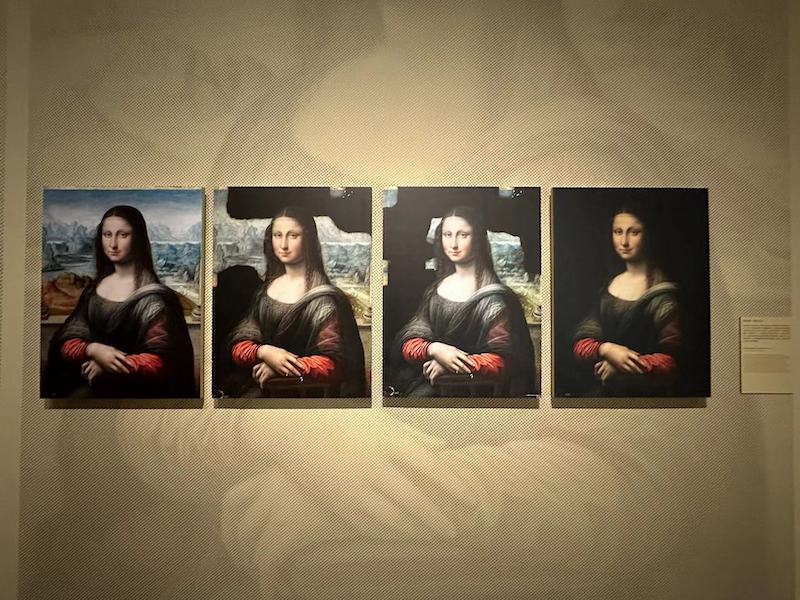
The research and restoration process of the Mona Lisa in the Prado Museum
The Focus Unit begins with the large-scale Mona Lisa image in the public area on the first floor, leading visitors into the exhibition hall. Through a series of original photographs, reproductions and animations, the exhibition explores the history of the Prado's Mona Lisa before, during and after restoration. At the same time, multiple detailed images further reveal the exquisite beauty of this masterpiece.
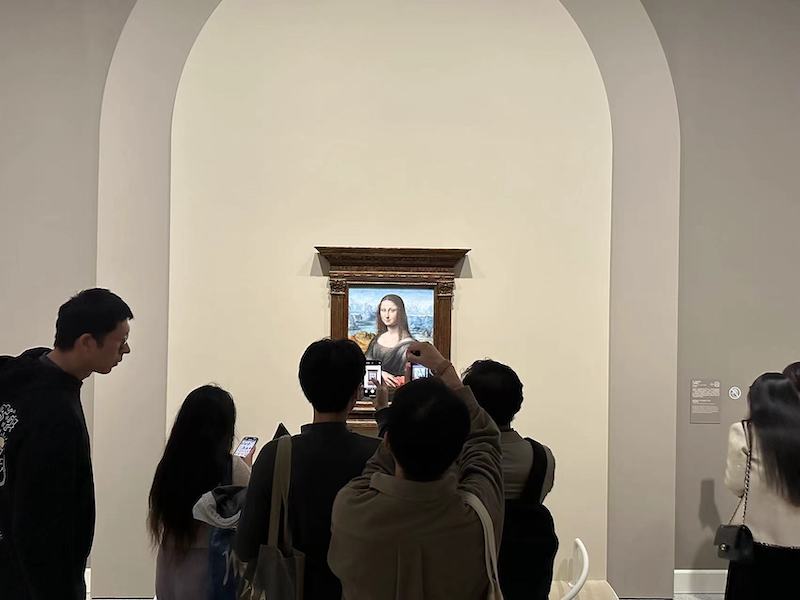
The exhibition design team drew inspiration from the original exhibition hall of the Prado where the Mona Lisa was located, and reproduced many "Prado-like" spatial elements.
The exhibition design team drew inspiration from the original exhibition hall of the Prado where the Mona Lisa was located, and reproduced many "Prado-style" spatial elements, such as the arched backboard and plaster decorative lines behind the painting. These designs are intended to create an immersive exhibition experience for the audience as if they were in the Prado Museum. In addition, the focus unit also elaborates on the connection between the painting and the original work in the Louvre, allowing the audience to have a more comprehensive and in-depth understanding of this famous masterpiece in the history of painting.
In the "Secret Room", the Prado's Self-Referential Collection
The "Mona Lisa" in the special unit is only a small part of the Prado exhibition. More works are on display in the third floor of the museum. According to Pedro J. Martínez Plaza, curator of the 19th century painting department of the Prado Museum, the Spanish "Glorious Age" of the Prado Museum will be displayed here with ten themes.
"We hope to bring the most important and representative works of the Prado's painters to China; we hope to present the history of Spain, the culture and social conditions of the territories under Spanish rule in the exhibition; and we hope to understand the history of Spain from an artistic perspective," Plaza said.

Jordaens, The Painter's Family, ca. 1621-1622, oil on canvas
The first work in the exhibition is Jacob Jordaens's The Painter's Family, one of the most striking portraits in the Prado's 17th-century Flemish collection, whose creator Jordaens is as famous as Rubens, Van Dyck and Jan Bruegel the Elder. Marinus van Riemersweiler's 1539 work The Tax Collector and His Wife (also known as The Money Changer and His Wife) is the earliest work in the exhibition (the latest work in the exhibition was completed in 1910, basically spanning four centuries).

exhibition site
Afterwards, household-name painters such as El Greco, Rubens, Velázquez, and Goya appeared one after another along with the history of the Habsburg and Bourbon dynasties. Portraits of Felipe II, Felipe IV, Carlos IV, and Felipe V's family were arranged in sequence with the folk customs, scenery, life and entertainment of Spain (including the territories under Spanish rule) from the 16th to the 18th century, providing a glimpse into the changes in science, culture, fashion, and society during this period.

Exhibition view, El Greco, Portrait of a Young Gentleman, circa 1600-1605, oil on canvas
Among them, the most noteworthy is the "Mythological Chamber" exhibition hall, where Titian's "Venus in Love and Music" and four mythological works by Rubens are surrounded, echoing one of the most famous historical fragments of the Prado Museum - the "Secret Chamber" (Sala Reservada), and also corresponding to Titian's influence on Rubens.
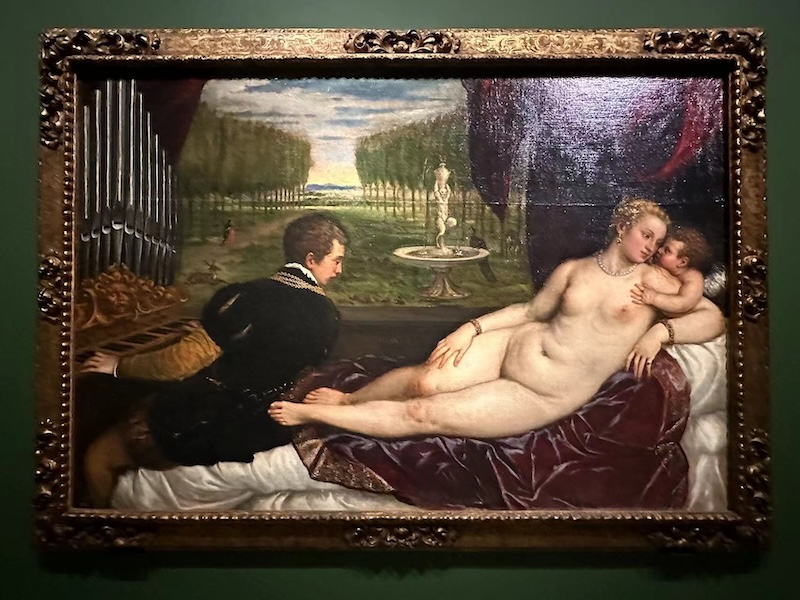
Titian's work "Venus Intoxicated with Love and Music" at the exhibition
Since the second half of the 16th century, records of Spanish royal and aristocratic collections mention the creation of special exhibition spaces for nude works. The most notable of these was the decision made by Charles IV in 1792 and 1796, who, in response to a request from the Royal Academy of San Fernando, deposited his most important paintings of this type in a "secret room" of the institution in order to use them to study colors, lending a total of 37 works by 15 painters, with the works of Titian and Rubens being the most representative.
In 1827, the paintings were transported to the Prado, where most of them were integrated into a new “Secret Room” on the edge of the museum (currently Rooms 64 or 67), accessible only to those with a special pass. The “Secret Room”, known through the will of King Ferdinand VII, contained 72 paintings.

Pudong Art Museum "Mythical Secret Room" Exhibition Hall
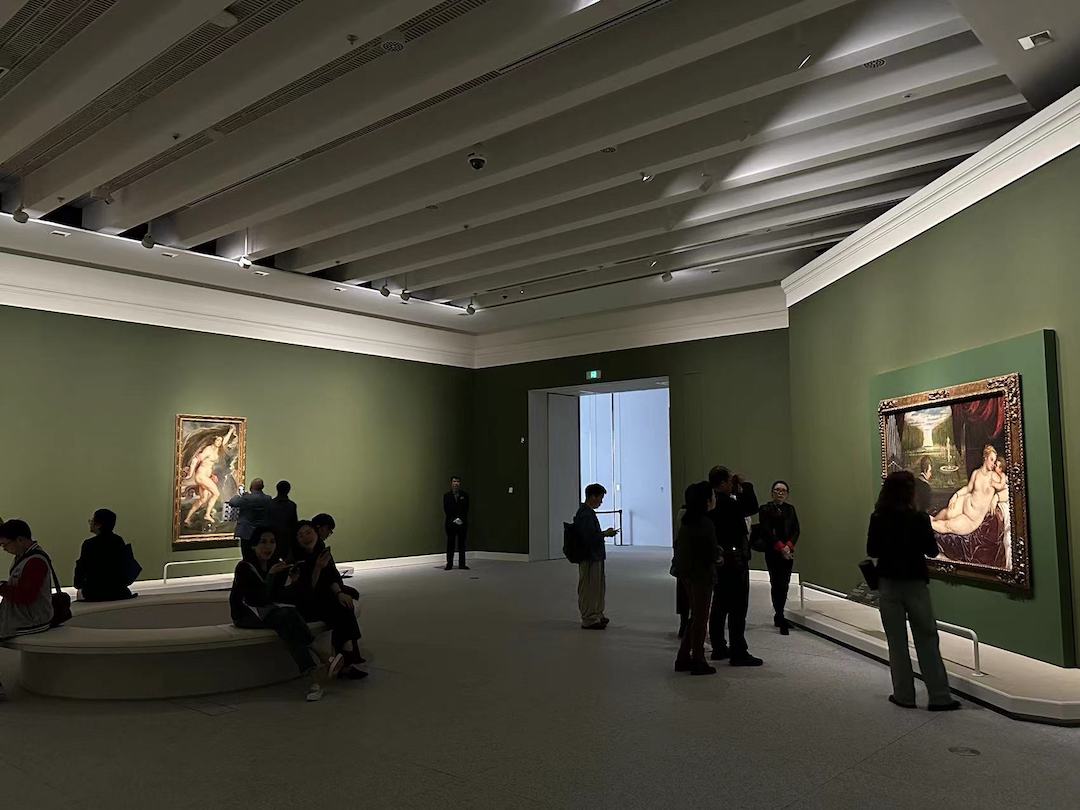
Pudong Art Museum "Mythical Secret Room" Exhibition Hall
The exhibition at the Pudong Art Museum evokes the memory of the "secret room" of the Prado. Among them, Titian is a typical representative of the Venetian School of Painting. He maintained close ties with the Spanish royal family for more than 40 years and painted many works for Charles V and Philip II. "Venus in Love and Music" in this exhibition can be regarded as one of his masterpieces, showing his superb skills in depicting the human body. "In the Prado Museum, "Venus in Love and Music" and Goya's "Maja" look at each other. Goya also learned from Rubens, and even further back to Titian." Martinez Plaza said.

Exhibition view Peter Paul Rubens and his studio The Rape of Hippodameia
In this section, Rubens and his studio's works "The Rape of Hippodameia", "Mercury", "Diana the Huntress" and "Fortuna" show the prosperity of Baroque art. He deeply expresses human passion in his creations. The plump beauty of the characters in his paintings and the dynamic sense of the composition are particularly prominent in "The Rape of Hippodameia". Even when depicting a single character, his works also show vigorous vitality and dynamism.
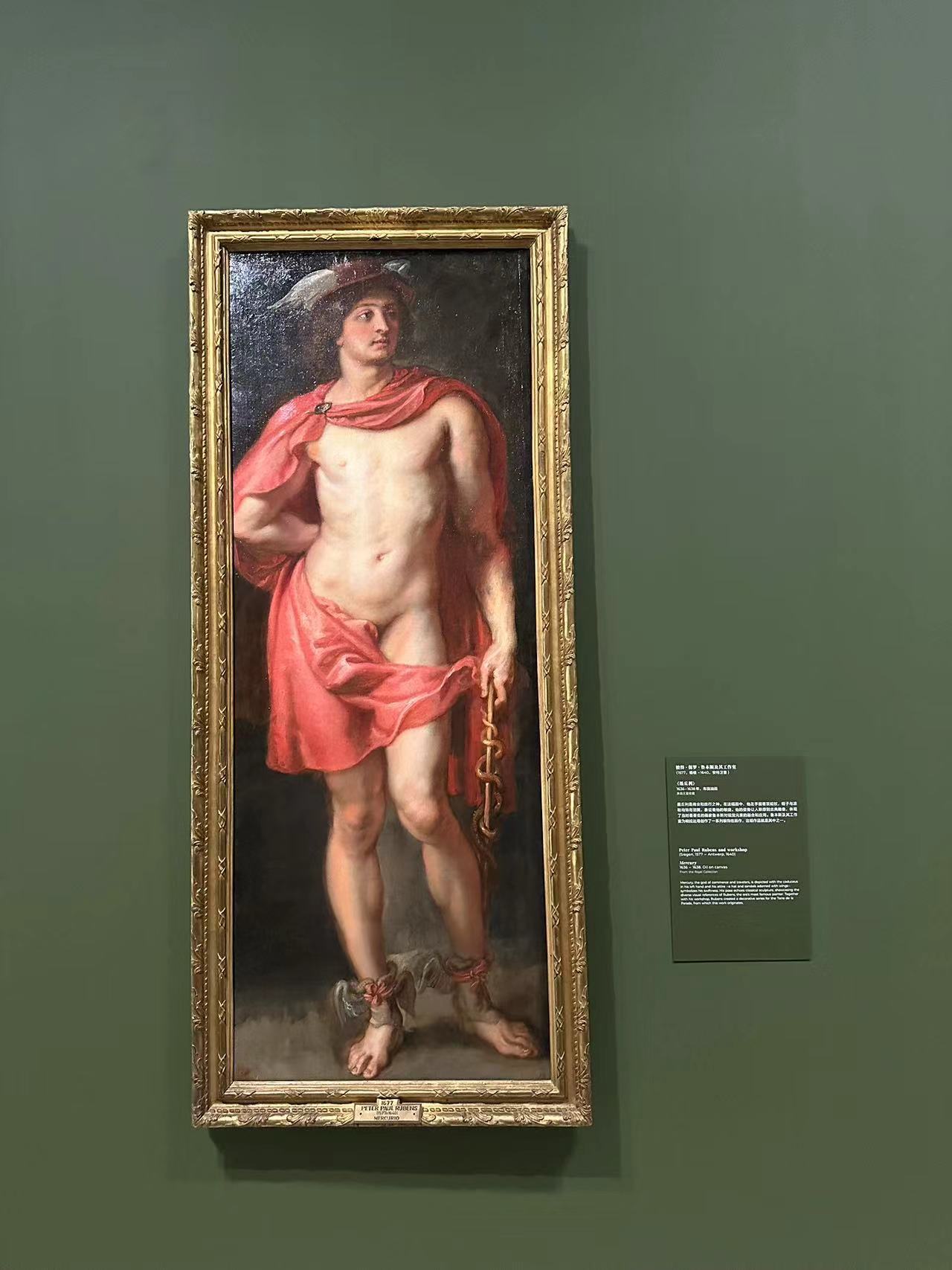
Exhibition view, Peter Paul Rubens and his studio, Mercury
"The Venetian school of painting has the characteristic of color before line, which was loved by the Spanish monarchs. This influence is huge and continuous." Miguel Falomir Faus, director of the Prado Museum, said in an exclusive interview with The Paper, "Rubens and Velázquez learned from Titian, and Goya learned from Velázquez and the works of previous painters to form his own style. Therefore, it is precisely because the Prado Museum has such a large number of works by these painters that the collection has self-referentiality."
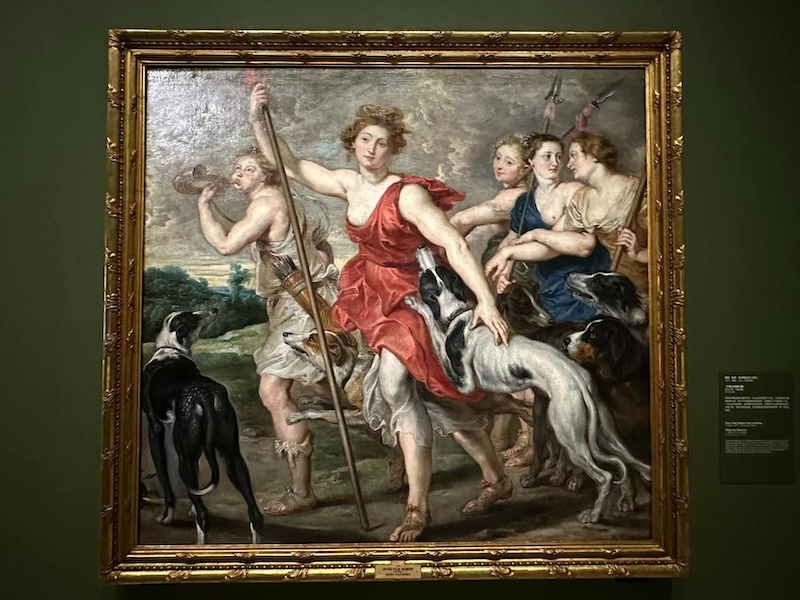
Exhibition view, Peter Paul Rubens and his studio, "Diana the Huntress"
“This is a main thread of the exhibition (the self-referentiality of the Prado’s collection) – if Rubens had not seen Titian’s work, perhaps he would have been a different painter. In this room, you can see the connection between Rubens’ female bodies and Titian. If you haven’t seen Titian, you won’t understand Velázquez, and if you haven’t seen Velázquez, you won’t understand Goya,” says Martínez Plaza.
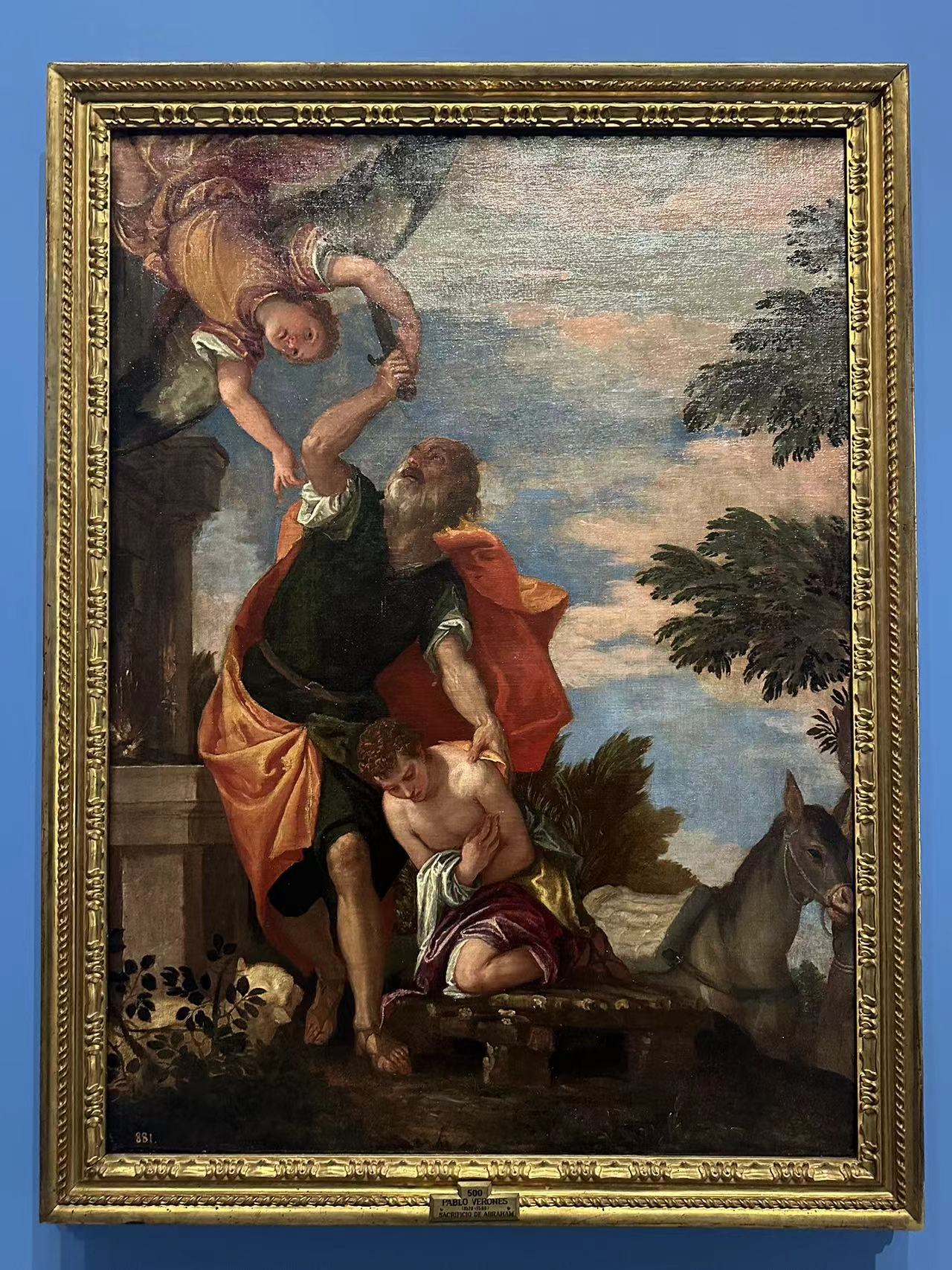
Exhibition view, Paolo Veronese, The Sacrifice of Isaac, circa 1585-1588, oil on canvas
Eight paintings by Goya: the inheritance and far-reaching influence of his art
As for another important artist in the history of Spanish art, Goya, this exhibition presents eight of his works, two of which are in the "Bourbon Dynasty and the New Regime" section, outlining the innovation and evolution of Spanish royal portraiture under the rule of the Bourbon royal family.

Exhibition view, Goya's "Carlos IV", circa 1789
"Goya and the Beginning of Modernity" is an exhibition hall dedicated to Goya, showing the deep imprint he left on the history of modern and contemporary Spanish painting. Goya is also the artist with the largest number of works exhibited in this exhibition.
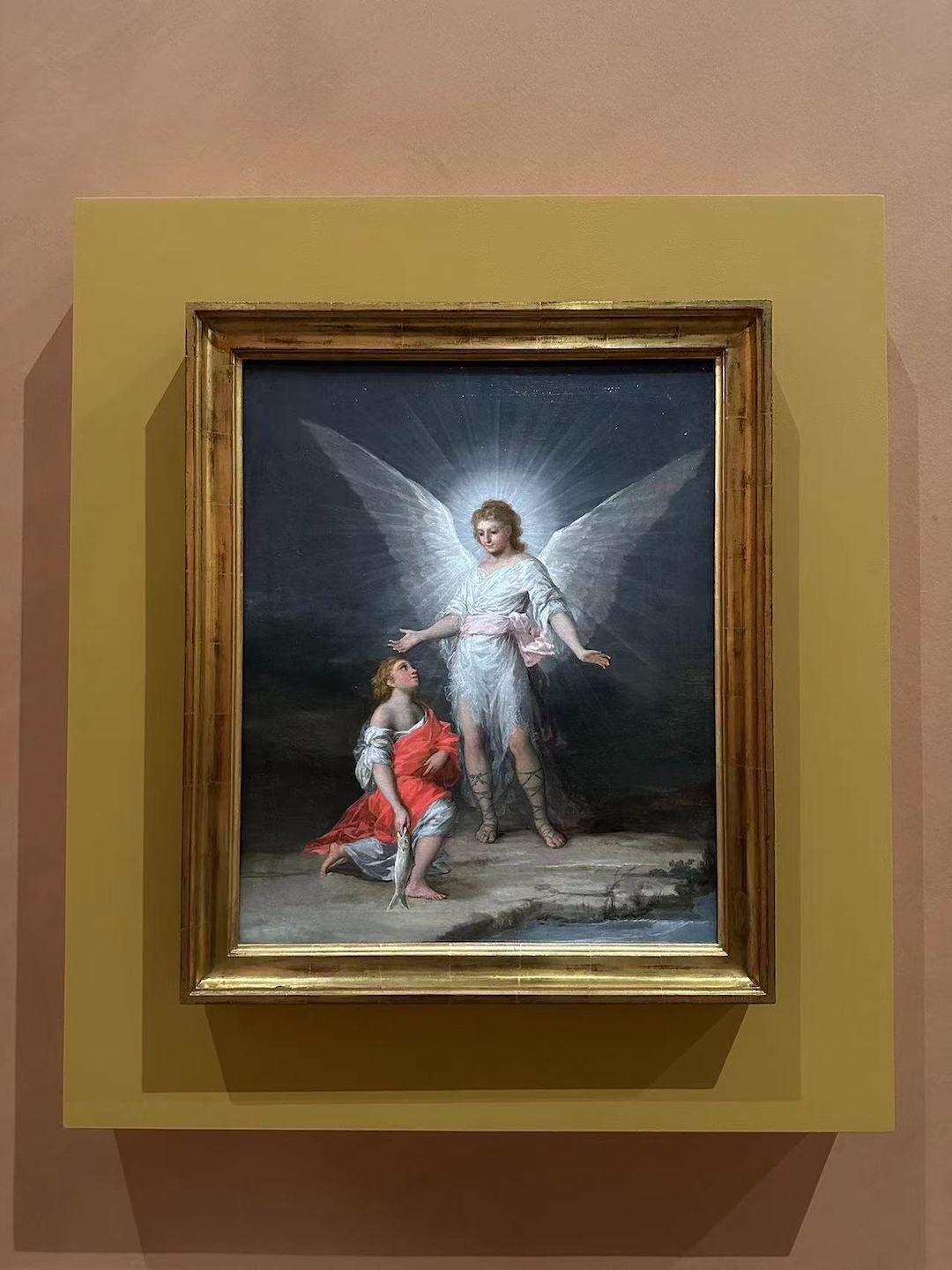
Goya's early work "Tobias and the Angel" is exhibited in the "Goya and the Beginning of Modernity" exhibition hall
Among them, the early work "Tobias and the Angel" still has the shadow of classical style; while "The Parasol", a draft created by Goya for the design of court tapestries, reveals his personal style in his mature period. Tapestry design is also one of the important commissioned projects that Goya participated in throughout his life, which lasted for 20 years. The tapestry designs exhibited this time also include "Boy Picking Fruit" and "San Isidro Chapel on the Day of Celebration". In the work "Painter Francisco Bayeu", he accurately captured the external characteristics and inner emotions of the characters with superb skills.
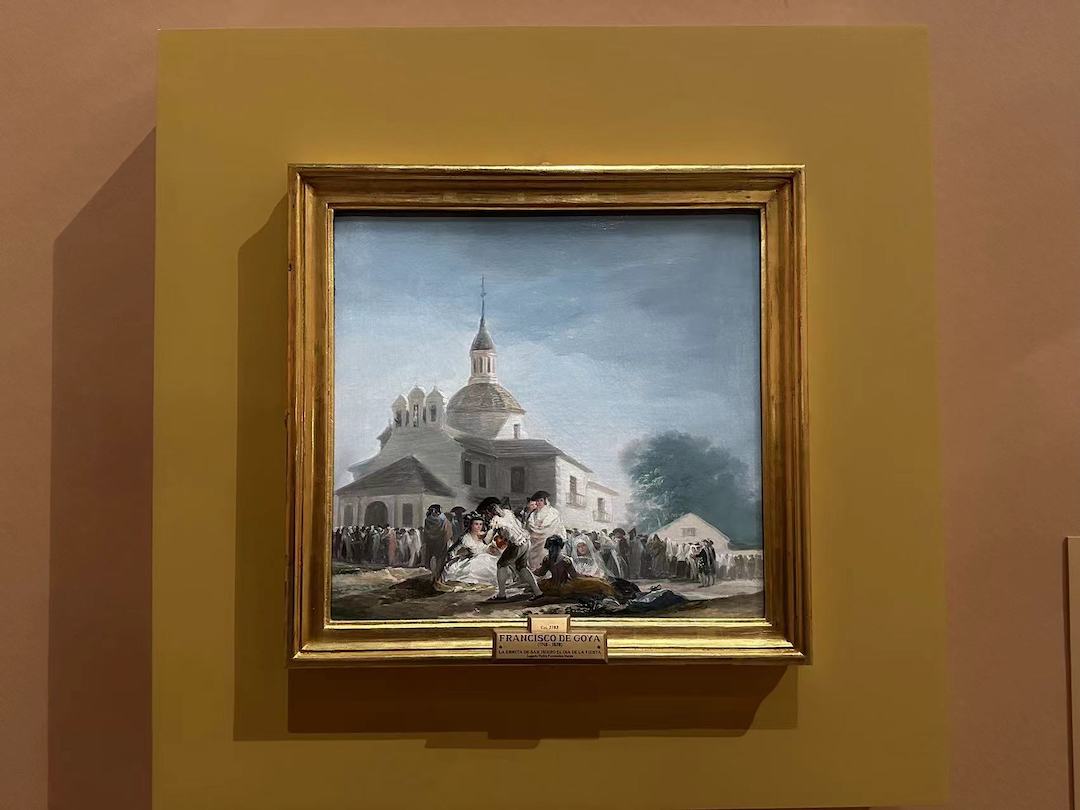
Exhibition view "The Chapel of San Isidro on the Day of Celebration" by Goya
As a key figure in introducing modernity to Spanish painting, Goya played an important role in the European painting world and provided endless inspiration for later artists. The last two works in this exhibition hall are "Maja" and "The Inquisition" by Eugenio Lucas Velázquez.
"Goya has many followers, and Eugenio Lucas may be the best embodiment of them. Such an influence is not only reflected in the Maja in the painting content, but also in the clothing of women in the Madrid area, as well as the use of light and shadow. Goya is also multifaceted, with different periods, different looks and styles. Lucas's "Maja" is related to Goya's more friendly and amiable side. "The Inquisition" may remind people of Goya in the dark age. In the use of light and shadow, we can also clearly see how to use prominent light to make the characters stand out from the dark background." said Martinez Plaza.
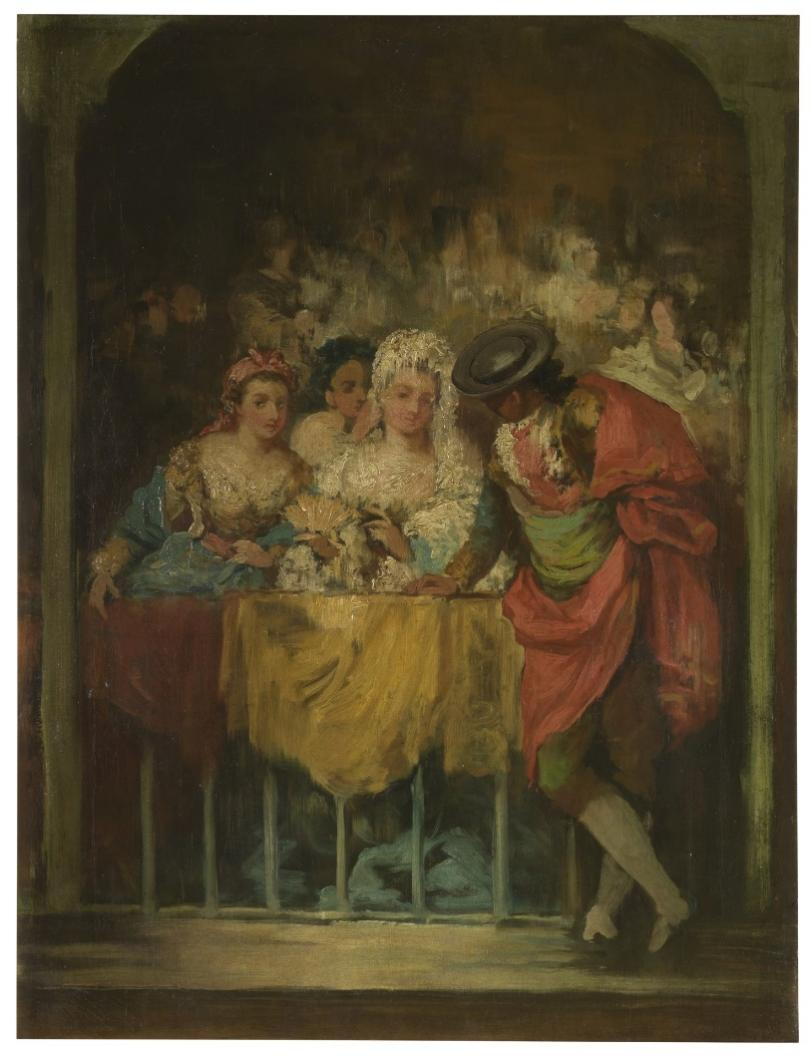
Lucas, "Maha", circa 1855-1860, oil on canvas, collection of the Prado National Museum
In addition, the design of the exhibition hall is particularly special. The exhibition wall specially uses the yellow color commonly seen in Goya's paintings as the main color, and the wallpaper texture shows obvious oil painting brushstrokes. This clever arrangement not only highlights Goya's masterpieces, but also adds a unique artistic atmosphere to the exhibition hall, making the audience feel as if they are in the world described by Goya.

Exhibition view: The Parasol, Francisco de Goya
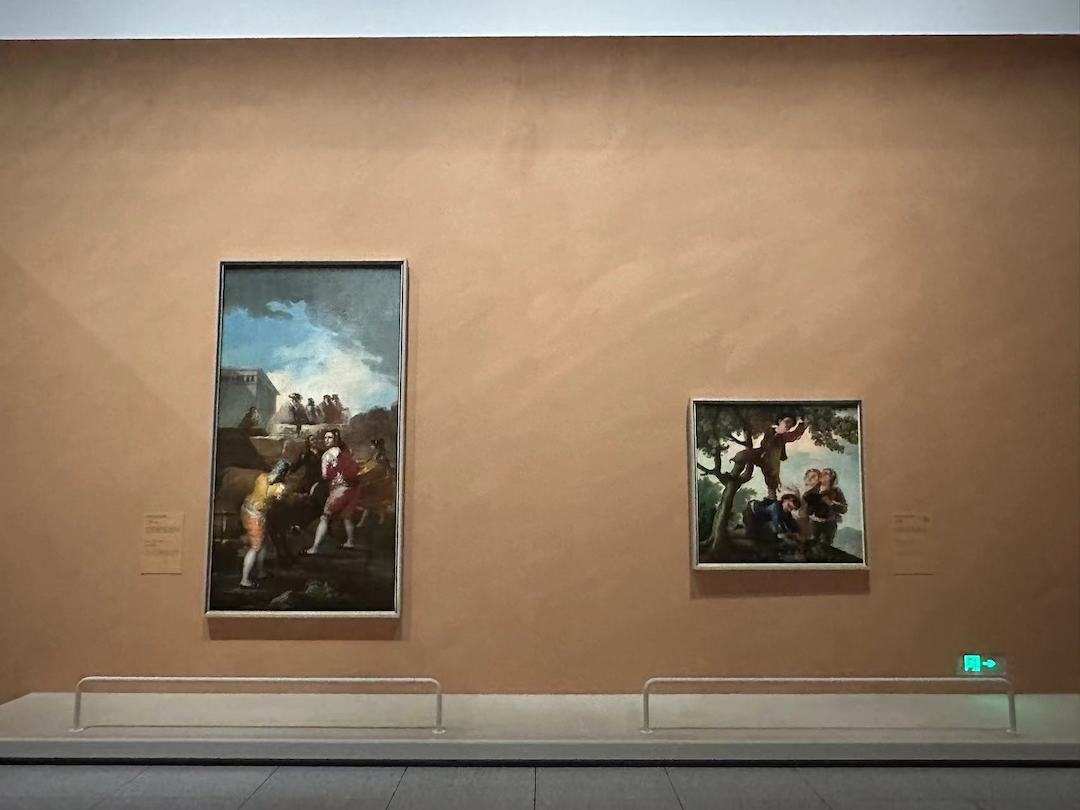
exhibition site
Walking through Goya's exhibition hall, the exhibition gradually came to an end. The last two exhibition halls focus on portraits and landscapes in the 19th century. At this time, the portraits painted by the painters were no longer members of the royal family. The bourgeoisie and the new aristocracy replaced the royal family and became the main customers of the painters.
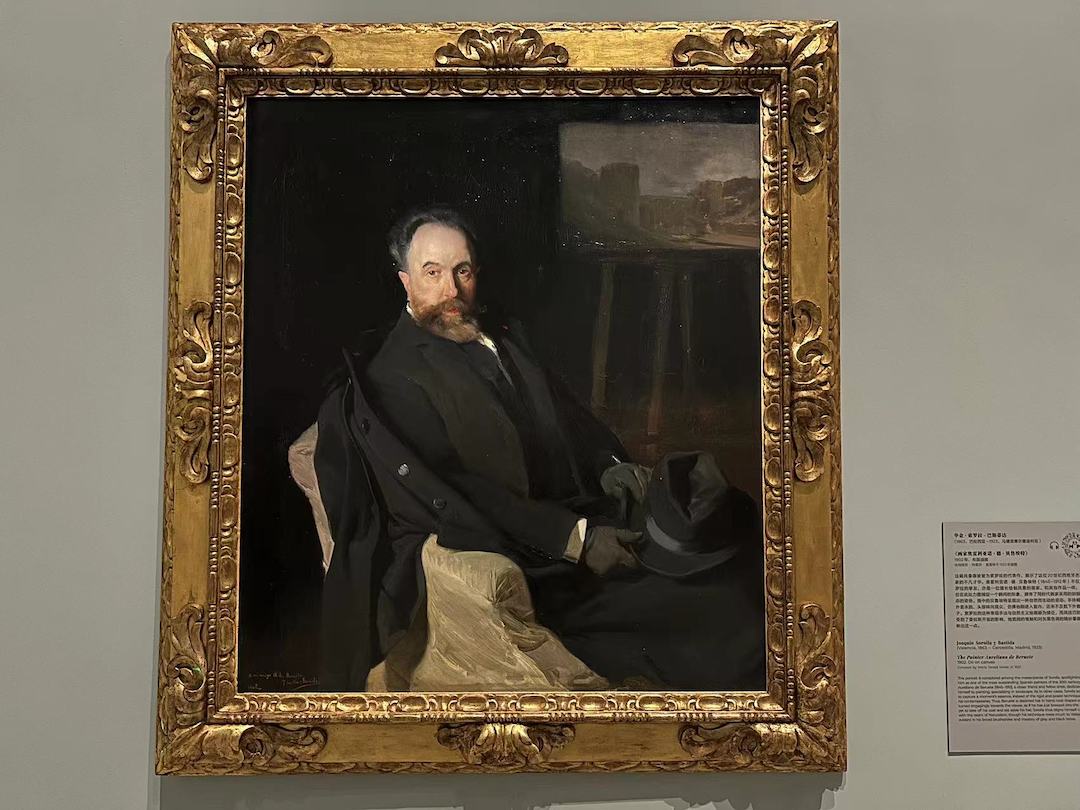
Exhibition view of Joaquín Sorolla y Bastida: The Painter Aureliano de Beruete
In Sorolla's works, we can see the shadows of Velázquez and Goya. In his work "Painter Aureliano de Berruet", the face of the person in the painting is slightly turned towards the audience. On the other wall, Goya's "Painter Francisco Bayeu" is also looking in this direction. The dynamic and immediacy of the painting resonates. The vision and thinking of looking at the new world are not only reflected in portraits, but also in landscapes.
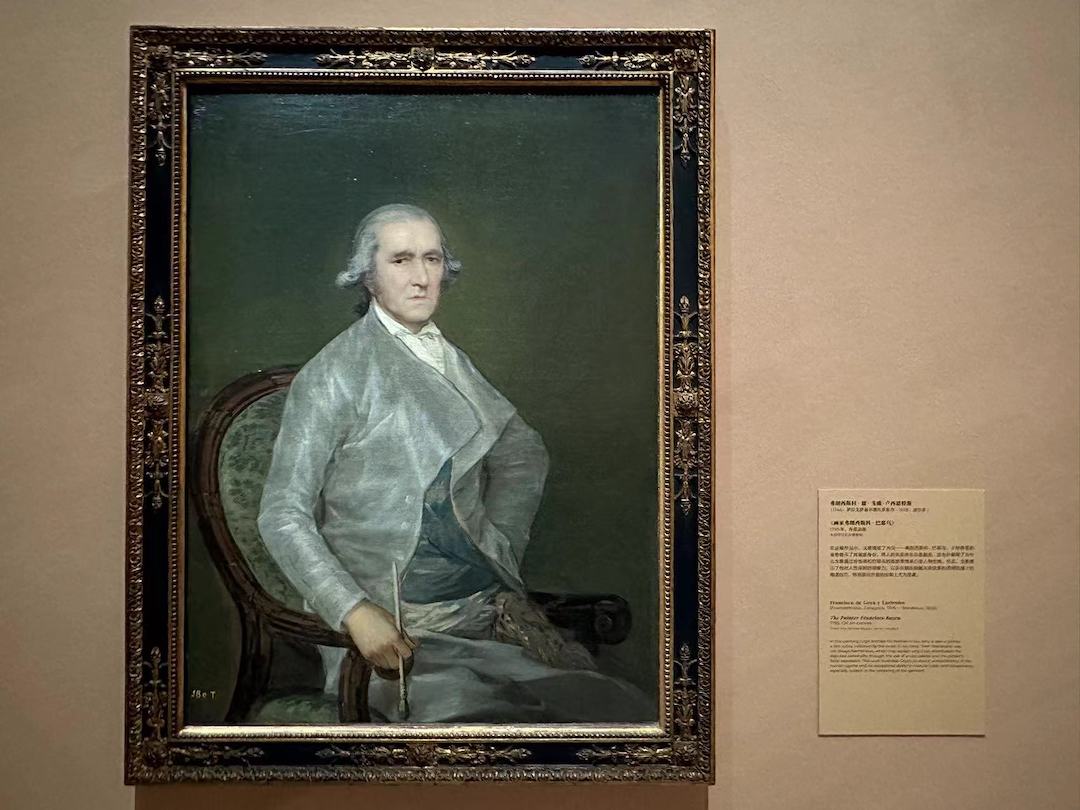
Exhibition site: "Painter Francisco Bayeu" by Goya
The last work in the exhibition is Sorolla's "The Silly Girl Played by Actress Maria Guerrero" in 1906. The actress's clothing in the painting reminds people of the princess in the Spanish national treasure painting "Las Meninas", and the skirt she wears is exactly the style of Spanish court skirt.
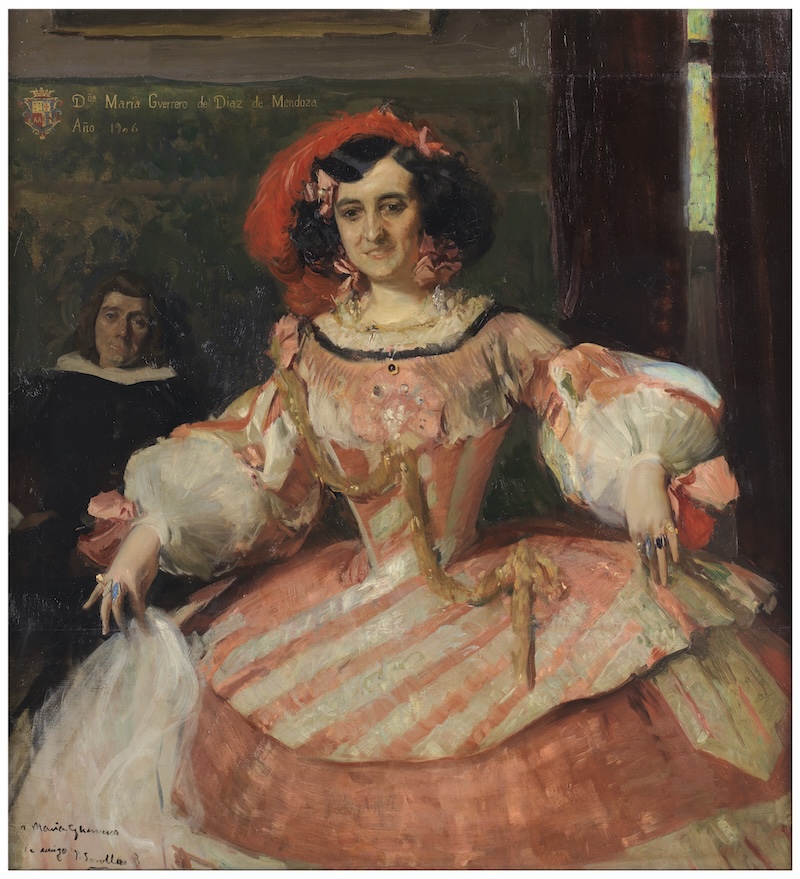
Joaquín Sorolla, "The Foolish Girl Played by the Actress María Guerrero", 1906, oil on canvas, Museo Nacional del Prado
"Through this painting, I want to review the elements, content, and master styles of Spanish paintings, and see the logic of the influence between masters and paintings in the historical process." Martinez Plaza said, "This actress played the role in "Silly Girl", a famous playwright of the Spanish Golden Age, Lope de Vega. Through this painting, I also want to tell the Chinese public that not only painting, but also Spanish literature has international influence. I also hope to attract everyone to the Prado in Spain to see "Las Meninas" with the last painting."
As Li Minkun, deputy general manager of Lujiazui Group and chairman of Pudong Art Museum Company, said: "This is not only a feast of art, but also a beautiful testimony of cultural exchanges between China and Spain. We hope to use this exhibition as an opportunity to introduce more Spanish art treasures to China and Shanghai, and share the brilliant brilliance of ideas and culture that transcend national boundaries with audiences from all over the world."
Note: "Glorious Times: Spanish Past in the Prado Museum" is produced by Shanghai Lujiazui (Group) Co., Ltd. and co-organized by the Prado National Museum and Pudong Art Museum. The exhibition is curated by Pedro J. Martínez Plaza of the Prado Museum's 19th Century Painting Department. The exhibition will run until September 1, 2024.
